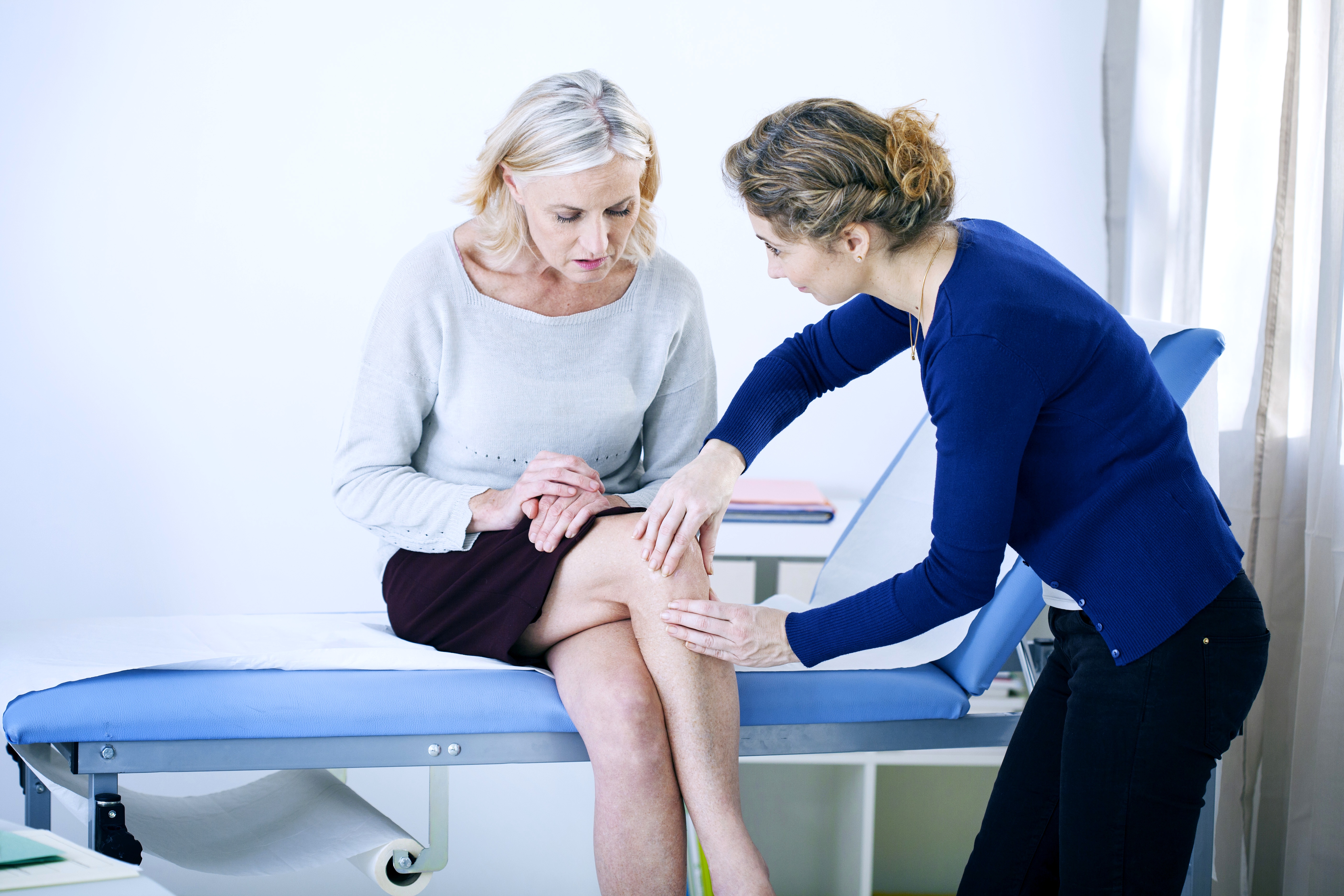One in three Americans are now considered obese and the more weight a person carries, the more likely a person can develop osteoarthritis (OA). OA is a condition involving the breakdown of cartilage characterized by pain and stiffness in the knees, hips, and other joints. It impacts people in their daily lives by imposing constraints upon physical movement at work and play. Extra weight increases stress upon joints and increases inflammation throughout the body. Chemicals associated with inflammation can break down the cartilage. This is why some people can develop OA in the hands, even though they are not weight bearing.
Obesity doubles the probability of a person developing OA. This is a preventable and modifiable factor. Recent studies show that a small weight loss of 5% of body weight can significantly improve body function – affording greater range of motion, better ability to bear weight, less pain and greater ease in climbing stairs. Besides weight, other factors such as weak muscle strength, repetitive use of joints, age and genes, can contribute to the onset of OA.
So, what can you do to protect your joints?
- Gentle exercise. This is probably one the most effective treatments. It will not cure or slow down the progression of OA, but it can increase range of motion and keep the joints flexible. Inactivity can lead to stiffness and more pain. Consult with an exercise specialist and learn activities that are mild to moderate and not too aggressive.
- Strength training: strong muscles can handle weight better by providing more stability and helping the joints move the way they are supposed to.
- Aerobic exercise: Improvement in blood flow can help the nutrients reach the cartilage to stay healthy. Aerobic exercise helps also to reduce the body’s sensitivity to pain signals.
- Flexibility exercise: Slow and gentle movements such as Tai-Chi that combines balance with weight-shifting poses has been shown to relieve pain and stiffness and improved function in joints.
- Nutrition supplements:
- Glucosamine: This is a compound produced within our bodies that benefits cartilage health. There is no scientific evidence proving that this supplement is effective in the treatment of OA. There are positive study results; however, these studies are funded by the supplement industry. Despite the paucity of independent research evidence, if a person feels that glucosamine is working and no negative symptoms develop, there is no harm in continuing to use it.
- Chondroitin: When taken alone or in combination with glucosamine, this compound has not shown to alleviate pain from OA.
- MSM (methylsulfonyulmethane): Some supplements replace chondrointin with MSM, but studies have not shown any benefits of MSM.
- Fish Oil and Krill Oil: These two oils are good sources of omega-3-fatty acids which are considered anti-inflammatory agents. One company funded study showed that people taking these oils had less pain after 14 days of use.
- Vitamin D: A large study funded by NIH showed no benefits of daily intake of 2,000 units of vitamin D for two years by people with OA.
- SAM-e: In a small study, people who took 1,200mg of SAM-e daily for 1-4 months reported as much pain relief as those who took over-the-counter pain medication such as ibuprofen, acetaminophen, naproxen and aspirin.
Unfortunately, there is no magic supplement that can relieve arthritis pain or build cartilage. The best approach is to prevent or slow down the progression of OA by avoiding weight gain and in engaging in regular exercise. For more information, consult with a registered dietitian and an exercise specialist.
Elize is a registered dietician and holds PhD in Nutrition. She is also an employee of The Alaska Club.


